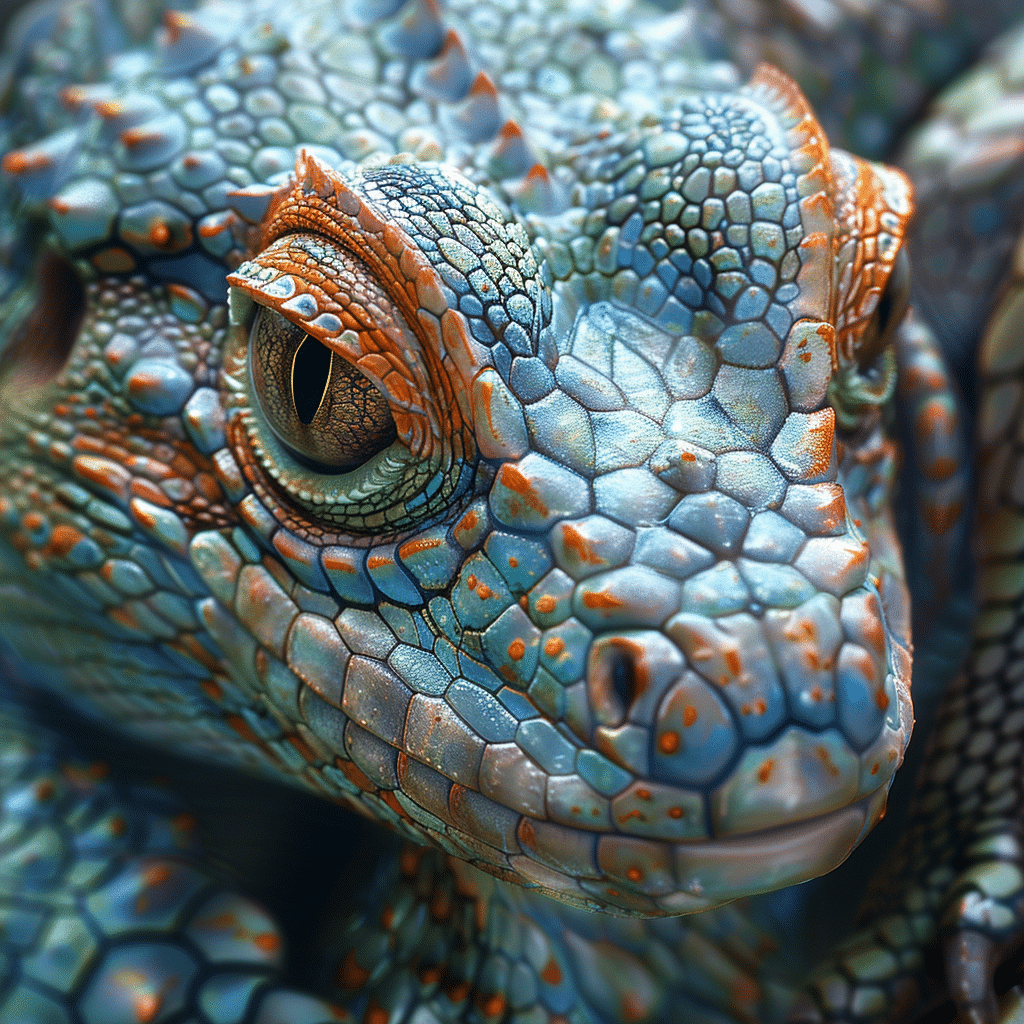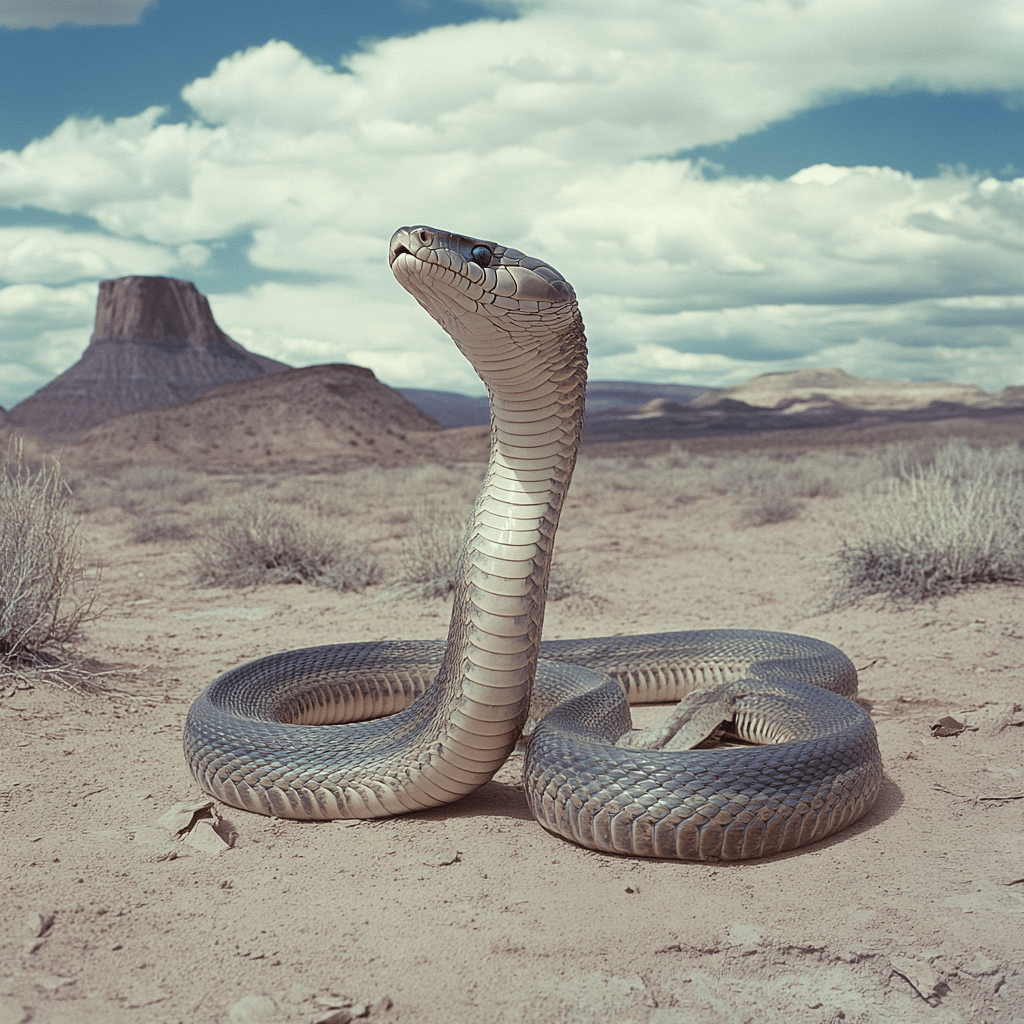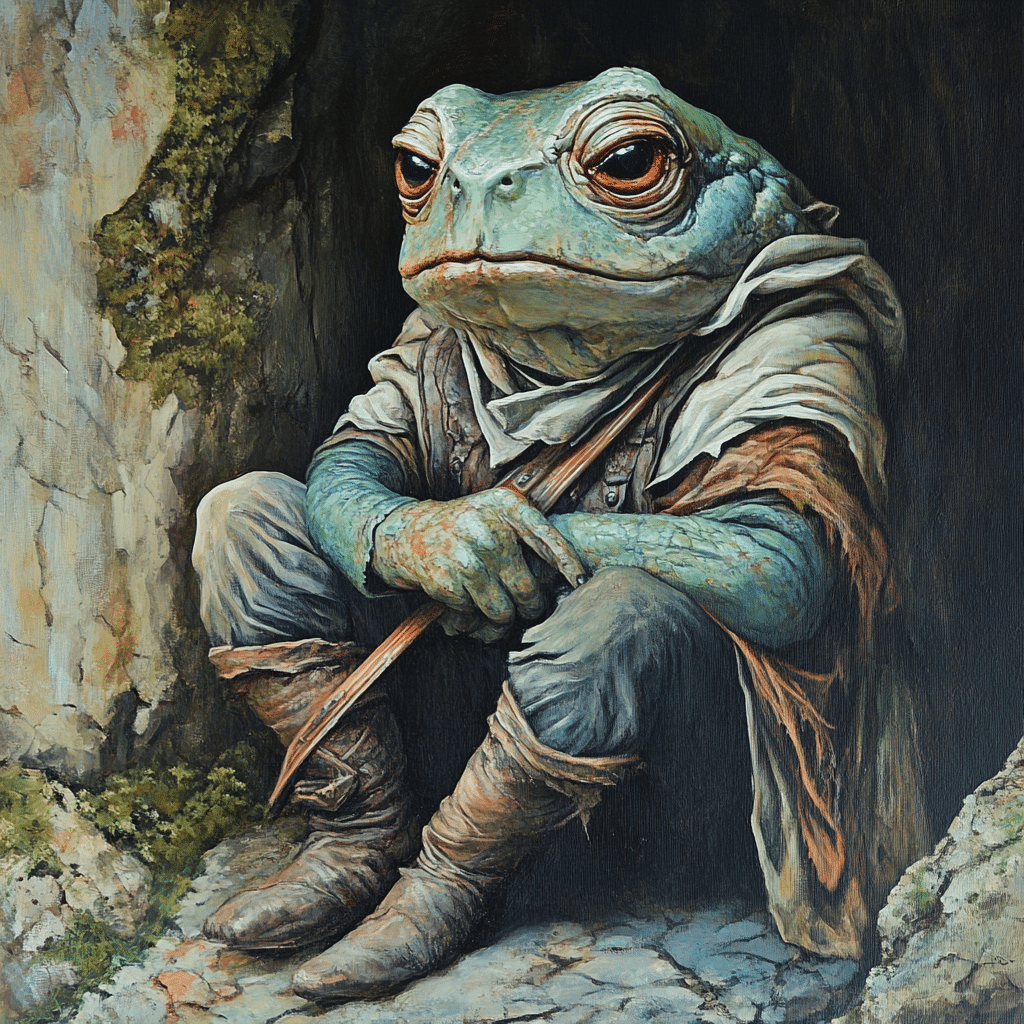The power to change form or disappear into the surroundings seems like something ripped straight out of a sci-fi novel. But what if I told you that reptiles have been pulling off this magic trick for millions of years, right under our noses? Deep within the animal kingdom lies a realm of creatures equipped with the almost mythic ability to transform themselves – the phenomenon we call reptile shapeshift. Ready to dive in? Let’s unravel the secrets of these cold-blooded transformers together.
Unraveling the Phenomenon of Reptile Shapeshift
The very notion that an organism can alter its shape, color, or size sounds like pure fantasy, but reptiles are here to prove otherwise. Reptile shapeshift isn’t a matter of growing wings overnight or morphing into entirely different species. Instead, it’s a suite of adaptations innate to these fascinating creatures that allow significant and often rapid changes within their phenotype – the observable traits influenced by both genetics and environmental factors.
It’s called phenotypic plasticity, and reptiles are the masters of this biological craft. So, how does it work, you may ask? It’s a bit of an intricate dance between the genes they’re born with and the world they find themselves in. Imagine the genetic material as a vast library of possibilities, with the environment acting as the librarian that selects which books get read.

The Cold-Blooded Chameleon: Reptile Shapeshift Explained
It all begins with chromatic flair. Let’s take chameleons, the poster children of reptile shapeshift, as our starting point. You’ve probably watched, fascinated, as these creatures blend into their surroundings with what seems like a brushstroke from Mother Nature’s palette. This magic is made possible by specialized cells in their skin called chromatophores. These cells contain pigments, and by expanding or contracting them, chameleons can change color faster than a Domhnall Gleeson performance changes on-screen.
But what’s the force behind this spectacle? It’s not just a matter of picking a color; chameleons use this ability for thermoregulation, communication, and predator evasion. Neurologically, it’s a tango between hormones and signals from the brain, creating more shifts and hues than even The menu Reviews at a gourmet restaurant.
| Reptile Species | Adaptation Type | Mechanism | Function | Example | Observational Notes |
| Chameleons | Morphological | Skin pigmentation change | Camouflage; social signaling | Panther Chameleon (Furcifer pardalis) | Can rapidly change colors in response to temperature, light, and mood. |
| Geckos | Behavioral | Tail autotomy and regeneration | Predatory escape; distraction | Leopard Gecko (Eublepharis macularius) | Can lose and regenerate their tails to escape predators as a survival tactic. |
| Australian Mimicry Lizard (Chlamydosaurus kingii) | Morphological | Frill neck display | Intimidation; thermoregulation | Frilled-neck Lizard | Possesses an extendable frill which can make it appear larger to deter predators or court mates. |
| Horned Lizards | Morphological | Body shape and coloring resembling rocks and soil | Camouflage | Texas Horned Lizard (Phrynosoma cornutum) | Its body resembles the texture and color of its desert surroundings, aiding in hiding from predators. |
| Anolis Lizards | Morphological/Behavioral | Can change skin color; Dewlap extension | Social signaling; camouflage | Green Anole (Anolis carolinensis) | Exhibits color changes to communicate or blend with vegetation. |
| Sea Turtles | Behavioral | Nesting migration and hatchling dispersion | Reproduction; survival of species | Leatherback Sea Turtle (Dermochelys coriacea) | Female turtles return to their birthplaces to lay eggs, and hatchlings travel from beach to ocean, dramatically changing their environment. |
Surprising Mechanism #1: Chromatophores and the Reptile Shapeshift Dance
Chromatophores act as nature’s nano-tech, allowing not just chameleons but various reptiles to perform their shapeshift dance. When a chameleon decides to change colors, it’s engaging in an impressive neuro-hormonal control system that alters its skin hue. Imagine these cells like tiny mood rings, only much more sophisticated. They respond to mood, temperature, and even the reproductive cycle.
A prime example is when male chameleons encounter a rival or potential mate. As emotions rise, hormonal signals are sent sprinting to these chromatophores, and voilà, you’ve got yourself a reptilian light show. It’s pretty wild stuff, right? It’s like changing your outfit with a snap of your fingers to show you mean business or are ready for love.

Surprising Mechanism #2: Hormonal Havoc in Reptilian Transformation
Hormones are like the secret agents of the body, and when it comes to reptiles, they’re often running the show. These chemical messengers go bananas in reptilian life, orchestrating shifts that could make your head spin. Estrogen and testosterone, for instance, aren’t just for humans; they also play a massive role in reptilian morphs.
One hormonal hotspot is the green anole lizard, which sees a dramatic change in its dewlap, an extendable throat fan, during the mating season. A surge in testosterone causes the hue to intensify, making it a sight that’s hard to miss to any female anole out there. This isn’t just showing off; it’s reptile shapeshift with a hormonal twist.
Surprising Mechanism #3: Temperature’s Tight Grip on Reptile Shapeshift
Now, let’s turn the thermostat up (or down) because temperature is another ringleader in the reptilian circus. It might sound like a bad case of cold-blooded blues, but for these critters, the ambient temperature is a primary factor driving their morphology.
Take the example of anoles again. These guys literally change size as the mercury moves, with lower temperatures leading to longer limbs. You might think of it as Mother Nature’s own version of thermal expansion. The ability to regulate body temperature through physical shape not only exemplifies the flexibility of reptiles but also underlines the necessity of such adaptations for survival. Warm up, stretch out; cool down, shrink in – it’s almost a dance routine dictated by the sun!
Surprising Mechanism #4: Mimicry Mastery and Reptile Shapeshift Artistry
Beyond color and size, mimicry is where reptiles really get elusive. It’s like being at a masquerade ball where everyone’s dressed as foliage. The horned lizard, for instance, masters the art of disguise, with body scales that can mimic the texture and color of its desert home. Predators look right past, assuming it’s just another pebble.
This mimicry is a form of shapeshifting that goes beyond aesthetics; it’s a matter of life and death. Evading death by blending in? That’s a high-stakes game of hide-and-seek if I’ve ever seen one, and reptiles are the reigning champions.
Surprising Mechanism #5: Shedding Skins: The Ultimate Reptile Shapeshift
If you thought taking off a layer of clothes was transforming, wait till you watch a reptile ditch its entire outer self. Shedding, or ecdysis, is the reptilian version of a makeover, allowing growth and ridding the body of parasites and other unwelcome hangers-on. It’s skin renewal taken to an extreme.
This isn’t merely for show and tell. It’s a significant facilitator for growth and health in reptiles. Picture living in a house that gets too tight every few months and being able to step out of it, leaving it behind like an old pair of shoes. That’s shedding for you – the ultimate in reptile shapeshift.
Surprising Mechanism #6: Growth and Regeneration: Reptile Shapeshift’s Regenerative Power
Moving on to regeneration – it’s not exactly Wolverine, but it’s close. Some lizards and geckos have the remarkable ability to regrow lost tails. This form of shapeshift is nothing short of a biological marvel; it’s a complex process involving stem cells and intricate genetic orchestration.
The cells at the wound site get to work like a construction crew on bring Your child To work day piecing together a new tail that’s sometimes even better than the original. It’s a stunning display of nature’s resilience and an inspiration for medicine and science.
Surprising Mechanism #7: Behavioral Reptile Shapeshift and Communication Cues
Shapeshifting is not all about stealth and survival; sometimes, it’s about saying something important. Reptilian communication often involves physical changes, such as the American alligator’s dramatic bellow accompanied by water dances during mating season. The posture changes, creating a visual and acoustic display that’s hard to ignore.
These shifts in shape and behavior serve as critical communicative functions in the wild, from courtship to dominance, proving that when it comes to getting your message across, reptiles are surprisingly eloquent.
The Human Interaction: How Our Presence Influences Reptile Shapeshift
But this intricate web of adaptability doesn’t exist in a vacuum. Human activities, including habitat destruction and the encroachment of urban development, can throw a wrench into these carefully balanced mechanisms. Climate change, pollution, and other anthropogenic factors can disrupt the delicate balance that facilitates reptilian shapeshifting.
Their ability to adapt is pushed to its limits when conditions change too fast or too drastically. Understanding how our actions impact these creatures can provide valuable insights, not just into their world but also about the ecological health of our planet.
The Ethical Debate: Reptile Shapeshift in Science and Spectacle
As we peel back the layers of this scaly subject, our fascination must also confront the ethical implications. Research on these creatures is essential for science, but when does observation become exploitation? And how does the pet trade or the entertainment industry, with its ever-demanding quest for the exotic and the awe-inspiring, impact the well-being of these shapeshifting species?
Like the moral dilemmas often faced by Vicente Zambada niebla in the convoluted world of narco-ethics, we too must tread carefully when engaging with these natural phenomena. Respecting nature’s complex tapestry is paramount in maintaining the integrity of both reptilian life and our own moral compass.
Conclusion: The Future of Reptile Shapeshift
To wrap up our deep dive, the secrets of reptile shapeshift continue to astonish, educate, and provoke thought. What we’ve unveiled is but the tip of the iceberg. The incredible adaptations we observe in these cold-blooded marvels are not merely curious anomalies but vital to their survival and emblematic of life’s remarkable ability to persevere and flourish in the face of adversity.
The insights gleaned from these creatures stretch far beyond the realm of herpetology, speaking volumes about evolution, adaptation, and our interconnectedness with the natural world. As we continue to gaze into the chameleon’s color-changing eyes, let’s remember the broader picture – the well-being of our planet and the diverse life it sustains.
Embracing the lessons of reptile shapeshift, we might just find answers to some of today’s most pressing challenges, from regeneration in medicine to climate adaption strategies. Their secrets, now a little less veiled, beckon us to ensure their continuation. After all, in preserving their magic, we’re safeguarding our own future.
For the scaly-skinned architects of nature’s grandest displays, tomorrow is another day to morph, to adapt, and most importantly – to survive. Let’s not deprive them, or ourselves, of that future.
The Wild World of Reptile Shapeshift: Unbelievable Transformations Revealed
Reptiles are nature’s enigmas, with their prehistoric charm and the uncanny ability to give us a glimpse into a past long gone. Now, hold onto your hats folks as we unveil the mystical realm of reptile shapeshift! It’s not hocus pocus—these creatures are the real deal when it comes to mysterious transformations. So, without further ado, let’s slither into seven crazy secrets of reptilian metamorphosis that’ll knock your socks off!
The Chameleons’ Camouflage Party
Alright, let’s kick things off with the life of every camouflage party – the chameleons! You know, they have this outrageous talent for color change faster than you can say “Jiminy Cricket!” But it’s not just for putting on a snazzy show. Nah, it’s more like their personal Michael Alig-style soirée – each tone and hue is a shout-out to their mood, matey rituals, or a sneaky tactic to escape the grasp of a predator.
Gecko Tails: A Tactic Straight Outta Sci-Fi
Now, talk about the ultimate party trick! Have you ever seen a gecko ditch its tail to escape danger? It’s like something outta a science fiction flick! But don’t fret; our resilient little lizards don’t just turn tail; they regrow a brand-spanking new one, fit for another escape. It may sound bananas, but that’s just your average Tuesday in the life of a gecko.
Slithering Rankings of Snake Skin
Shedding skin? Yep, it’s just like Overwatch Ranks, where a snake’s got to level up by leaving its old skin in the dust. Snakes can’t just waltz into a spa for a facial, right? So instead, they shimmy out of their outworn scales, emerging fresh and sparkly, ready to showcase their glossy new look.
The Invisibility Act Courtesy of the Anole
Ever wished you could go invisible? Well, Green Anole lizards are way ahead of you. In a flash, these little buggers can alter their skin tone to blend into the background, performing an invisibility act worthy of the finest magicians. Whether it’s eavesdropping on juicy gossip or snagging a snack, they’ve got the right strategy!
Turtle Shell-ter Transformation
If you thought the whole concept of a mobile home was modern, turtles and tortoises beg to differ. These guys figured out the mobile shelter biz long before the term ‘van life’ was even a twinkle in Lindsie Chrisleys eye. From softshell youngsters to hardtop adults, these creatures’ shells go through a serious remodel over their lifetimes.
Sea Dragons: Masters of Marine Masquerade
Leafy and weedy sea dragons will have you squinting at your aquarium, wondering where the heck they are! They’ve perfected the art of the marine masquerade, disguising themselves as seaweed to confound their enemies. So next time you’re staring at a clump of algae, take a closer peek – you might just be eyeing a living creature!
The Elusive Art of Lizard Limb Regrowth
And to top off our list, did you know that some lizards can pull a fast one, regrowing whole limbs after they’ve been lost? Yup, these resilient reptiles make a comeback that rivals the best redemption arcs. While we humans can’t regrow a finger after a cooking incident, these critters make bouncing back look like child’s play.
So there you have it, folks! A sneak peek at the crazy, mixed-up world of reptile shapeshift. Nature sure doesn’t skimp on the wow factor—these reptilian rascals are living proof. Let’s give a round of applause for the masters of disguise and transformation in the animal kingdom!






















